Growing a bladder, the rules of planting and caring for a shrub
The gallbladder is a deciduous shrub readily grown by gardeners. The reason is not only in high decorative qualities or healing properties: this representative of the Pink family is famous for its rapid growth and amazing unpretentiousness. It is quite simple to grow a spectacular bush on the site, planting a vesicle is a simple process, caring for it does not take much time. Knowledge of some of the features of growing a shrub will certainly lead to a successful result.
Types and varieties
A characteristic feature of the vesicle is its spreading branches, slightly inclining to the ground under the weight of corrugated leaves, which makes the crown look like a fluffy ball. The height of the bush rarely exceeds 3 m, the crown diameter is usually approximately equal to the height.
Of the 14 known species, domestic gardeners often grow two, but they are represented by a wide variety of varieties.
Amur bubble (yellow-leaved)
The height of shrubs of this species is usually about 3 m, the crown is spreading, spherical. A distinctive feature is the very smooth red-brown bark of young shoots. The 10-centimeter leaves are smooth, green on top, grayish, pubescent on the seamy side. Small, up to one and a half centimeters, white flowers are collected in inflorescences of 10-15 pieces. The flowering period is about 3 weeks, after which the branches of the bushes are decorated with fruits that turn red with the approach of autumn.
The advantage of the Amur vesicle is frost resistance. No less attractive is its ability to develop well in group plantings.
The following varieties are popular in urban landscaping and the design of summer cottages.
- Bubble plant Luteus - it has bright yellow leaves (in sunny places), bronze with the approach of autumn.
- Aureomarginate bubbly - gives the impression of a golden edging of leaves.
- Bubble Nana is a dwarf form with monochromatic leaves.
Calyx-leaved bladder (red-leaved)
The maximum height of shrubs of this species is 3 m, the leaves are serrated, similar to the leaves of viburnum. Flowers are small, up to 12 mm, color - from white to pale pink. Frost resistant.
The most popular are 2 varieties of the red-leaved vesicle.
- Diablo bubble - the owner of leaves, colored purple or dark red. It is noteworthy that in the shade, the color of the leaves becomes green with a slight purple tint. For greater decorativeness, the variety is planted in sunny areas.
- The Red Baron bubble plant is the variety most beloved by gardeners. The height of the bush is up to 2 m, the narrow 7-centimeter leaves are dark red in color. Pink flowers up to 5 cm in diameter tie red fruits.
Landing rules
For planting shrubs, choose a well-lit place. The bladderworm tolerates shading, but loses the exotic color of the leaves. Neither wind nor polluted air interferes with it. Therefore, the plant is often used as a hedge in urban areas.
The soil requires loose, neutral or slightly acidic soil, with good drainage. Fertility is an optional condition, the vesicle feels quite normally on depleted substrates, but its decorative effect decreases.
It is important to know that the close occurrence of groundwater, especially in combination with alkaline soil, provokes the development of chlorosis or rotting of the root system, which leads to the death of the bush.
Saplings are planted with seedlings purchased in the nursery or prepared from cuttings or cuttings. Seed reproduction is not very promising, since only a small part of the seeds inherits the parental qualities of the shrub.
Landing dates:
- seedlings with an open root system - in spring or autumn;
- seedlings from a closed root system (in containers) - during the entire growing season.
The planting hole is dug with dimensions of 50x50x50 cm. The bottom is laid out with a drainage layer. The extracted soil is diluted with a small amount of humus or peat. The drainage is covered with a prepared substrate by 5-6 cm.
The seedling is carefully removed from the container, preserving the integrity of the earthen coma as much as possible, and set in a hole (the roots do not need to be straightened). The root collar is placed at ground level, then the soil is poured.
After planting, the seedling is spilled abundantly with water with the addition of "Kornevin" or another root formation stimulator. When the moisture is completely absorbed, the trunk circle is mulched with any material, even dry soil can be used. The coating will prevent the formation of a superficial crust, which will ensure aeration of the roots.
When planting seedlings with an open root system, the general rules are observed:
- inspection of the root system;
- removal of dry, broken and with signs of root diseases;
- the roots in the hole are straightened.
The scheme of planting a vesicle in a hedge is two-row, in a checkerboard pattern. The interval between rows is 35-40 cm, between plants in a row is 45-50 cm. In group plantings, the distance between seedlings is maintained from one and a half meters.
Bladder care
Living in one place for up to 20-25 years, the vesicle practically does not need additional trouble. But, quickly gaining vegetative mass - up to 40 cm in the first year - it still requires care.
Pruning
The rapid growth of bladder shoots puts this procedure at the top of the list of care measures. The neat appearance of the shrub emphasizes its decorative effect.
Sanitary pruning is carried out in the spring - branches that have frozen and broken during the winter are removed. At the same time, shoots are cut out, growing inside the bush, thickening its middle.
Forming pruning gives the bladder a beautiful spherical shape. There are two options.
- Pruning shoots 40-50 cm long forms a spreading bush, consisting of several strong trunks.
- A fountain bush is obtained by carving thin shoots at the base. A few of the strongest branches are left, which are also cut off, but at a height of about 1.5 m, to stimulate further growth.
Bushes begin to form from the age of three.
If it is desirable to give the bush a compact form, young shoots are shortened 2 or 3 times per season.
Rejuvenating pruning is performed every 5-6 years: all shoots are cut under a stump, followed by processing with garden pitch.
Watering and feeding
The bubblegum is quite hygrophilous, therefore, in dry summer it is watered twice a week - about 4 buckets of water per adult bush.
Watering rules:
- the right time is morning or evening;
- exclude the ingress of water drops on inflorescences, fruits and leaves;
- after each watering, mulching or loosening of the soil is carried out, and weeds are removed.
Bushes growing on clay soils are watered more moderately to avoid stagnant moisture and subsequent root rot.
Fertilizers for bushes are applied twice a season.
- In the spring, during the opening of the kidneys - 250 g of mullein, 1 tbsp. l. saltpeter, 1 tbsp. l. urea per 10 liters of water. The need for one adult plant is 15 liters.
- Autumn - 2 tbsp. l. nitroamofoski for 10 liters of water. The consumption of the finished solution is 15 liters / bush.
Prevention and treatment of diseases
The unpretentiousness of the vesicle is accompanied by a rare resistance to possible diseases. The most real threat is caused by underfeeding or waterlogging, in which case chlorosis may develop.Its symptoms are excessive yellowing of the leaves, especially on young shoots, with the subsequent drying of the entire bush. At the first signs of the disease, the bushes are treated with iron-containing preparations (Ferovit, Ferrilen, iron chelate are suitable). Processing is carried out by spraying or watering at the root.
Pests bypass the vesicle.
Reproduction methods
The bladder is propagated in the usual ways for shrubs: by rooting cuttings, forming layering, dividing the bush.
- Cuttings
For cuttings, young shoots of adult bushes, cut before flowering, are suitable. The length of the cutting is from 10 to 20 cm, each segment should have 2-3 internodes. The lower leaves are removed, the upper ones are cut in half. Rooted in a special bed in a mixture of peat and sand. Cuttings are treated with "Kornevin", planted in a garden bed, watered and covered with a film.
Caring for cuttings is simple - regular moistening of the substrate and ventilation. For the winter, the garden bed is covered with spruce branches or agrofiber. In the spring, with the onset of warm days, rooted cuttings are planted in a permanent place.
- Layers
Layering begins in spring.
- Choose the shoots that are closest to the ground.
- Leaves are removed, except for the apical ones.
- Bend down.
- Fix in a groove 10-12 cm deep with garden staples.
- Fall asleep with earth.
They take care of the future seedling in the same way as for the mother bush - they water, feed, loosen the soil. In the fall, the layers are separated and transplanted to the chosen place.
- Dividing the bush
The fastest way to get a new copy in a short time. The bush is dug out of the ground, divided into several parts, each of which is planted in pre-prepared planting pits. In this case, speed is important - drying of the roots is extremely undesirable, since it will make it difficult for the bushes to take root in a new place.
Seed propagation
The method is applicable for seeds purchased from reputable sellers, or species of vesicle. It is only suitable for patient gardeners: a shrub grown from seeds begins to bloom in the 4th or 5th year.
You can sow seeds in autumn and spring (after stratification).
Sowing technology:
- prepare the bed by adding sand and peat to the soil;
- the seeds are buried by 2-3 cm;
- the crops are covered with foil;
- A pick of seedlings is carried out when 2-3 true leaves are formed.
Bubbles, which retain their decorative effect all year round (the red-brown bark of the shoots noticeably enlivens the winter garden), is a godsend for gardeners suffering from a lack of time. Ease of planting, minimal maintenance, strong immunity are the indisputable advantages of a plant that adorns a garden with an extraordinary color of leaves and a bush shape.
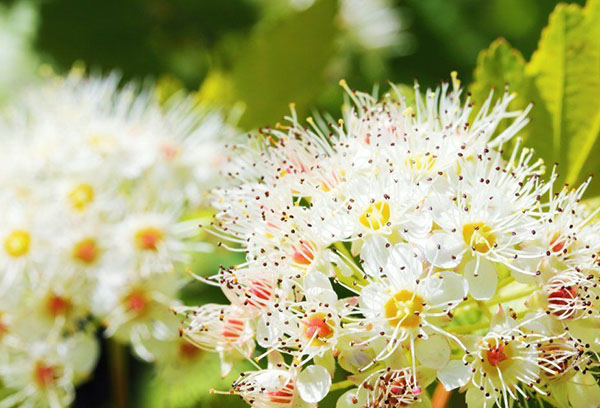
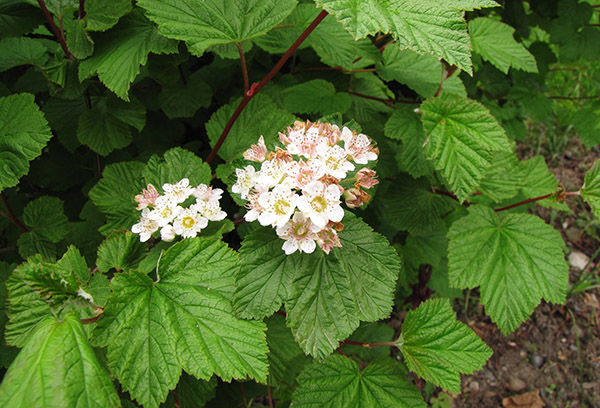
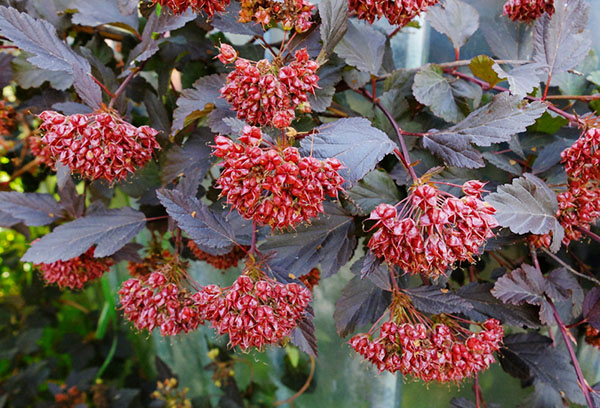
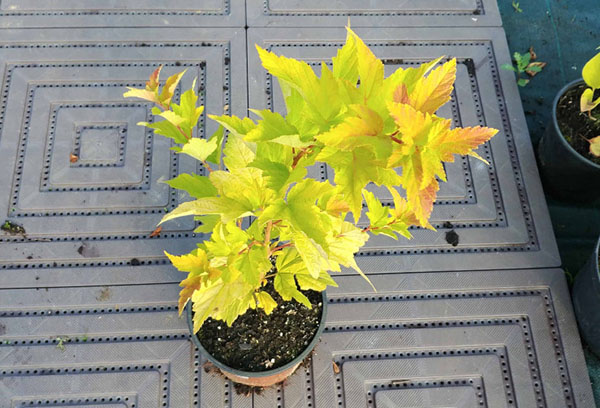
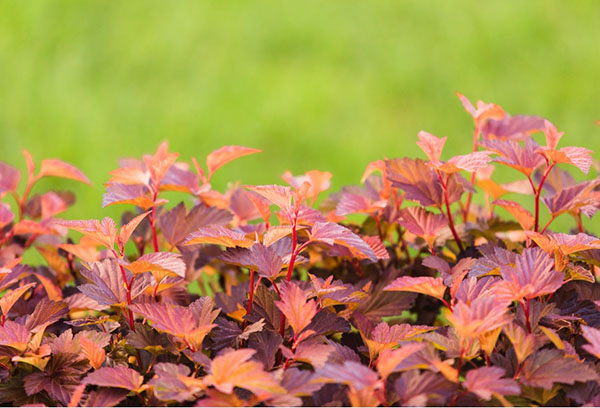
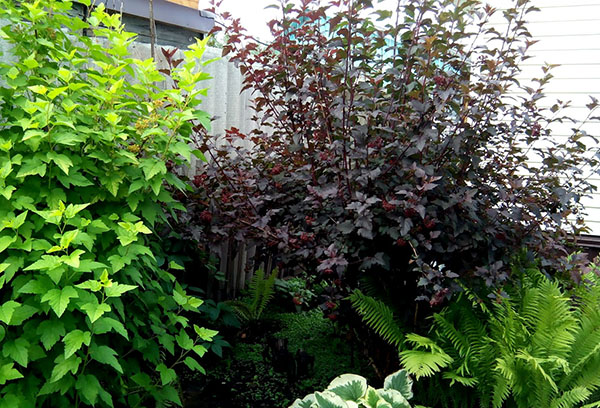
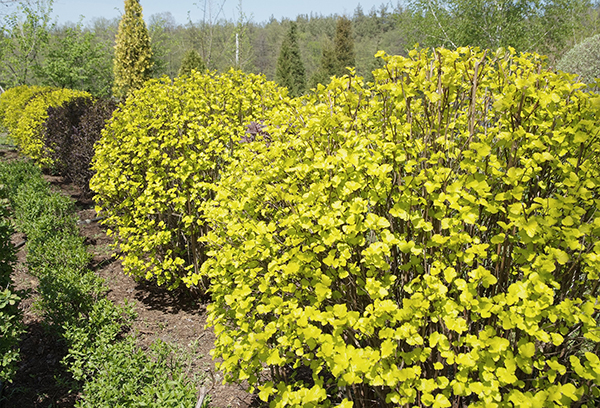


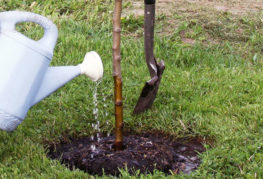
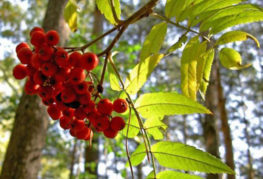
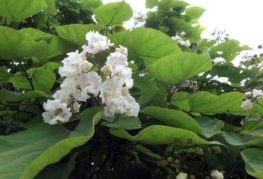
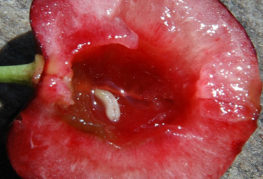
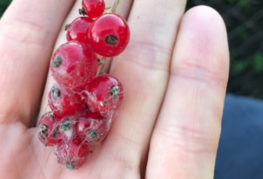
and will be published shortly.